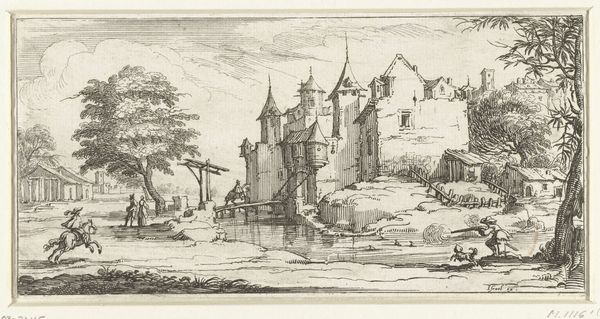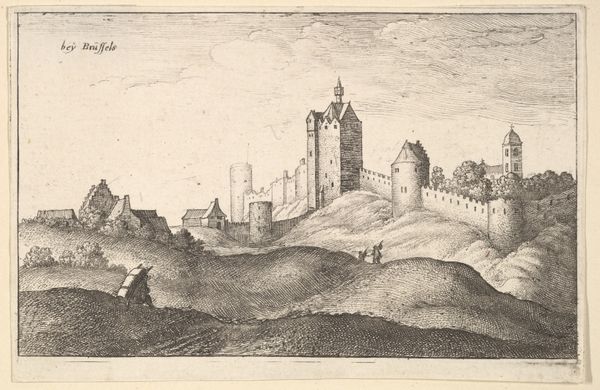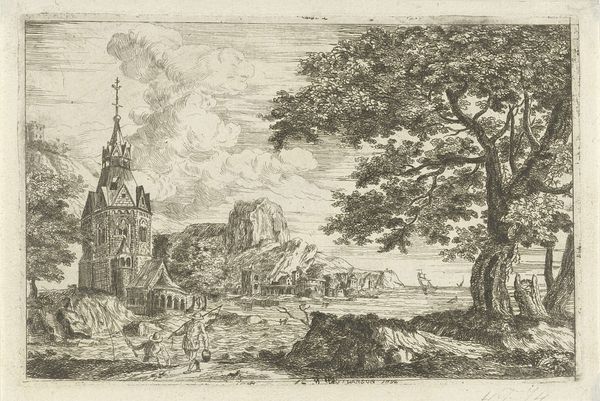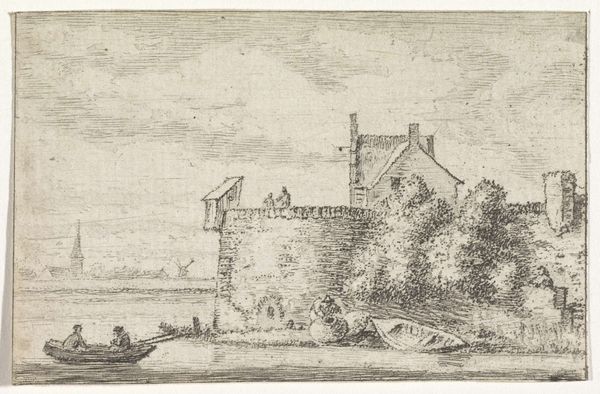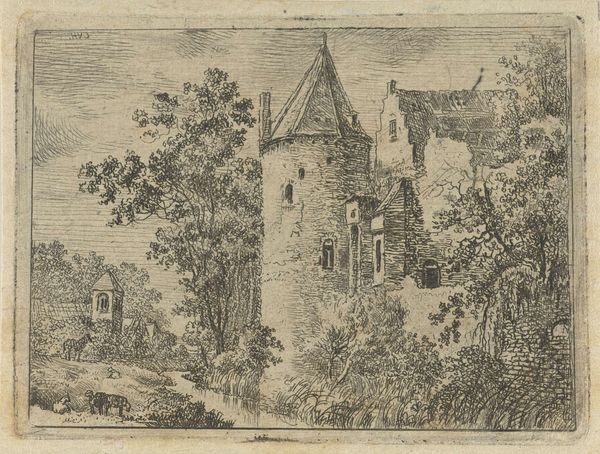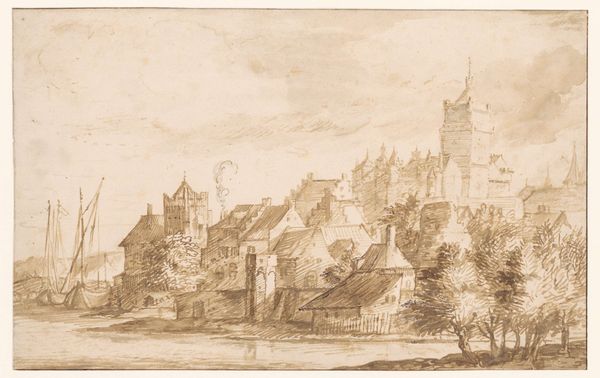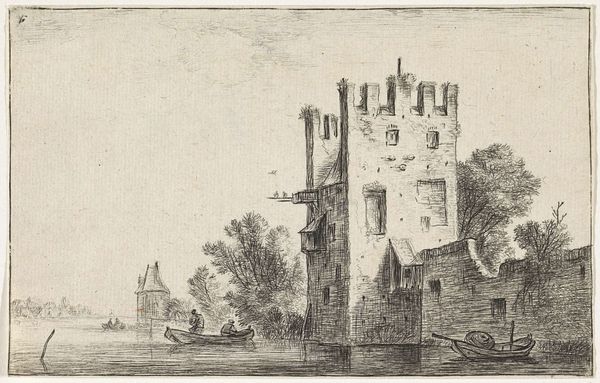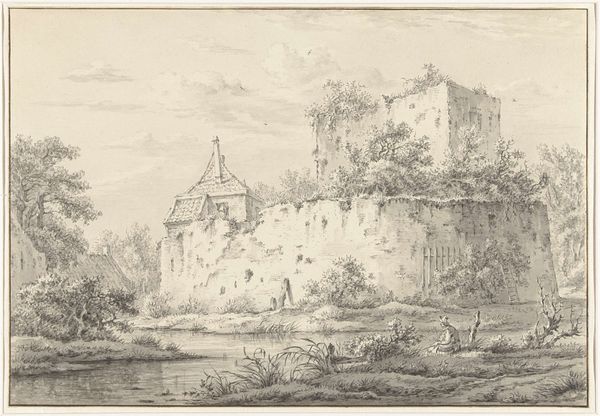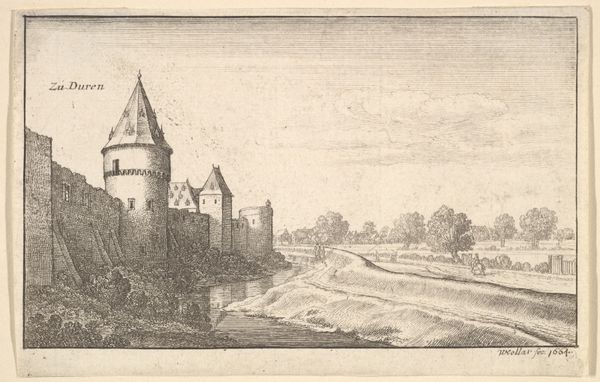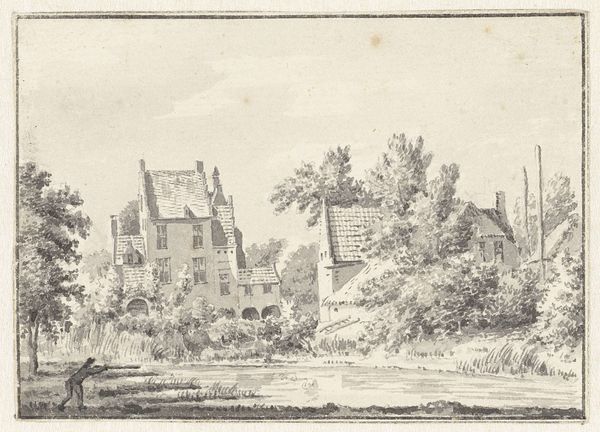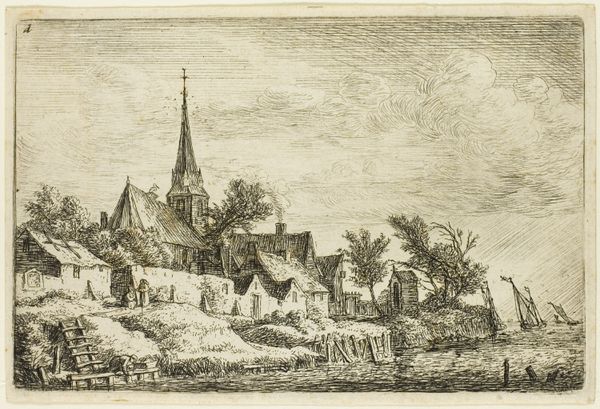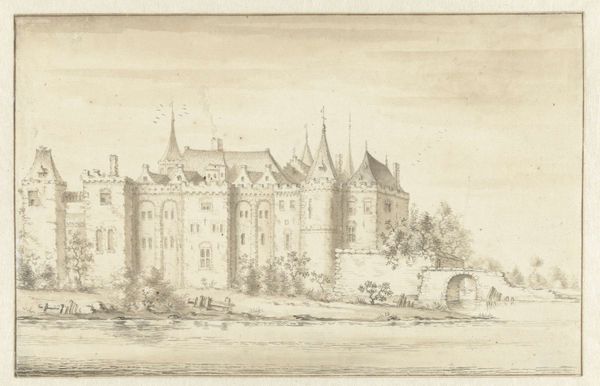
drawing, pencil
#
pencil drawn
#
drawing
#
dutch-golden-age
#
pencil sketch
#
landscape
#
pencil
#
cityscape
#
pencil work
#
realism
Dimensions: height 355 mm, width 518 mm
Copyright: Rijks Museum: Open Domain
Anthonie Waterloo rendered this drawing of Castle Bentheim with graphite on paper sometime in the 17th century. Graphite is a relatively soft and greasy material, which allows an artist to easily lay down tone and line. Here, Waterloo uses it to great effect to capture the solemn mass of the medieval castle. The rough texture of the paper and the artist’s hand creates shading and detail, making the architecture and landscape come alive. While graphite might seem like an unremarkable choice, it was only in the 16th century that it came into its own as a drawing medium. Before then, it was considered little more than a useful mineral. By the time Waterloo took up the material, graphite mines were opening across Europe, laying the groundwork for what would become the modern pencil industry. So, when you look at this seemingly simple drawing, think also of the mines, the trade routes, and the human labor that brought the graphite to Waterloo’s hand.
Comments
No comments
Be the first to comment and join the conversation on the ultimate creative platform.
